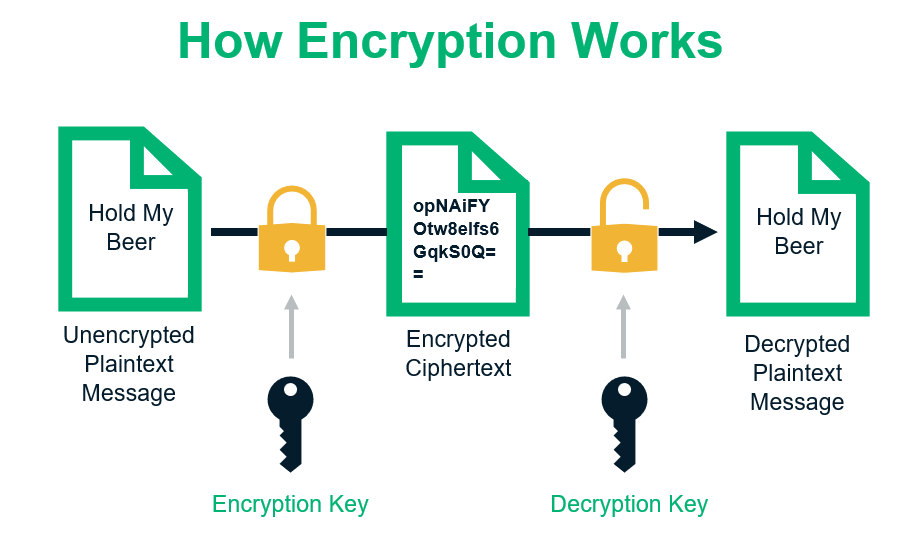Encryption is a crucial pillar of modern digital communication. It acts as a sentinel that guards sensitive information from prying eyes. However, the efficacy of encryption relies heavily on the secure management of cryptographic keys. Indeed, these keys can be compared to a key to a door; if someone obtains the key, they can enter. Thus, understanding how to store and share encryption keys without compromising security is imperative.
To embark on this discussion, it is vital to comprehend the duality of the encryption key—its utility and its vulnerability. Keys are not merely strings of characters; rather, they are the very essence through which encrypted data can be rendered intelligible. Therefore, the security of these keys is tantamount to preserving the confidentiality of the data they protect. Let us examine some of the most effective strategies for key management from a multifaceted perspective.
Firstly, the principle of least privilege must govern key distribution. This principle asserts that individuals or entities should only have access to the keys necessary for their functions, no more and no less. Implementing this policy minimizes the surface area of attack; if a key is exposed, the potential damage is curtailed as fewer entities hold access to that specific key. This strategy not only enhances security but also simplifies auditing and accountability.
Moreover, the concept of key rotation is instrumental in fortifying key security. Regularly changing encryption keys diminishes the risk of prolonged exposure. A compromised key may grant an adversary access to historical data, making it imperative to adopt a rhythm of periodic key updates. In practice, this means establishing a schedule for key rotation—perhaps quarterly or annually—and ensuring the old keys are invalidated appropriately.
To bolster the fortifications further, using a hardware security module (HSM) can be transformative. An HSM is a physical device designed to manage and safeguard digital keys. It provides a secure environment for key generation and storage, isolating the keys from the general computing environment, thereby reducing the risk of extraction by malware or other sophisticated attack vectors. Some HSMs even support cryptographic operations without exposing the keys themselves to external systems.
In conjunction with hardware solutions, employing an encrypted key vault system is equally essential. A key vault is software that specifically stores and manages access to cryptographic keys. The keys themselves are stored in an encrypted format, requiring stringent access controls. Access should be logged and monitored to detect any unauthorized attempts to retrieve keys. This dual-layered approach—both hardware and software—ensures robust protection and facilitates better oversight.
While the management of keys is paramount, the secure sharing of those keys must not be overlooked. Relying on outdated methods such as email or messaging apps for key exchange is fraught with peril, as these platforms do not offer the necessary security assurances. Instead, adopting secure key exchange protocols—such as Diffie-Hellman or Elliptic Curve Diffie-Hellman—can provide a secure means of transmitting keys. This technique allows two parties to create a shared secret over an insecure channel, effectively safeguarding against eavesdroppers.
Additionally, utilizing Public Key Infrastructure (PKI) can further streamline key sharing processes. PKI employs asymmetric encryption, where one key (the public key) is shared openly while the other (the private key) remains confidential. When sharing keys using this method, sensitive data can be encrypted with a public key, ensuring that only the corresponding private key can decrypt it. Thus, the challenge of secure transmission diminishes considerably.
A critical but often underestimated aspect of key management is user education and awareness. Users should be equipped with the knowledge of potential risks associated with key compromise and the importance of adhering to best practices. Regular training sessions can instill a culture of security and vigilance within organizations, ensuring that even the most junior employees understand the gravity associated with mishandling cryptographic keys.
It is also prudent to consider the integration of risk management frameworks, which help in assessing potential threats and vulnerabilities. Regular risk assessments can identify gaps in current key management practices and provide actionable insights for improvement. Organizations can then tailor their strategies to mitigate these identified risks effectively.
Lastly, the compliance landscape must be acknowledged. Various regulations, such as GDPR and HIPAA, mandate stringent practices for data protection, including key management. Ensuring compliance not only helps avoid legal repercussions but also fosters trust among clients and stakeholders. Adhering to best practices creates a reinforced framework that promotes a secure environment for sensitive data.
As the digital landscape evolves, so too must our approach to encryption and key management. Storing and sharing encryption keys without compromise is both an art and a science—a balance of technology, policy, and education. By implementing comprehensive strategies that include the principle of least privilege, key rotation, HSMs, secure key vaults, cryptographic protocols, user training, and risk management frameworks, organizations can cultivate an environment where not only the data is secure, but the integrity of the entire encryption process is fortified.
In conclusion, the challenge of key management should not be viewed merely as a technical hurdle, but rather as a fundamental responsibility. As we become more interconnected and dependent on digital communication, the need for secure, effective key management is more pressing than ever. It is a task that requires vigilance, knowledge, and a commitment to best practices—an investment that pays dividends in the form of trust and security in an increasingly vulnerable world.








Leave a Comment